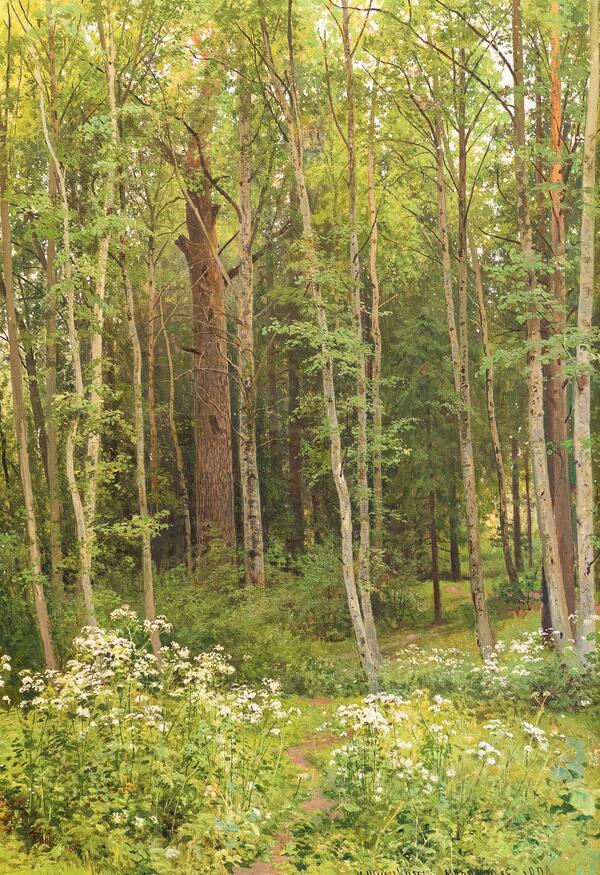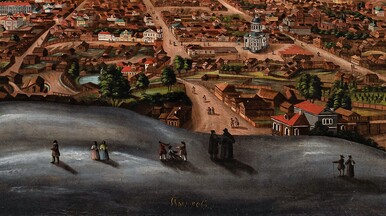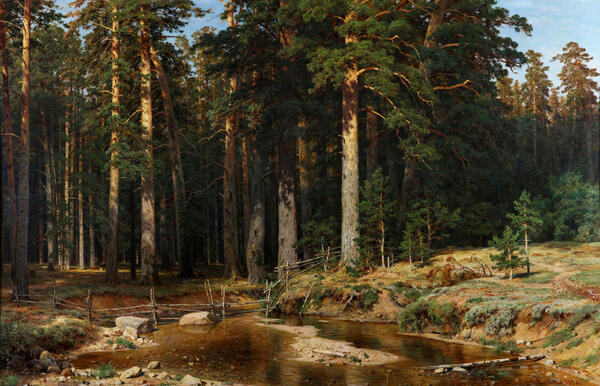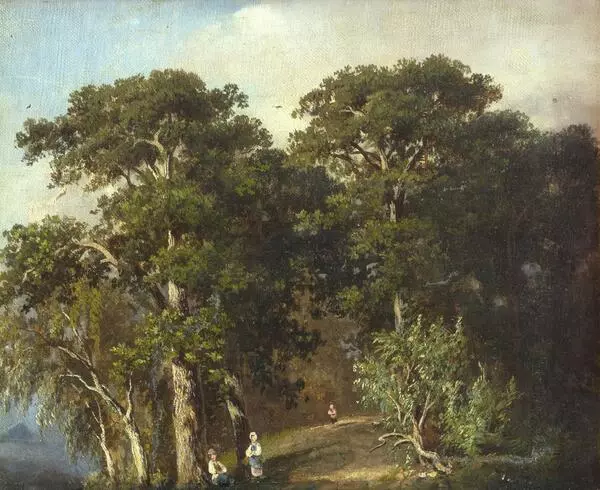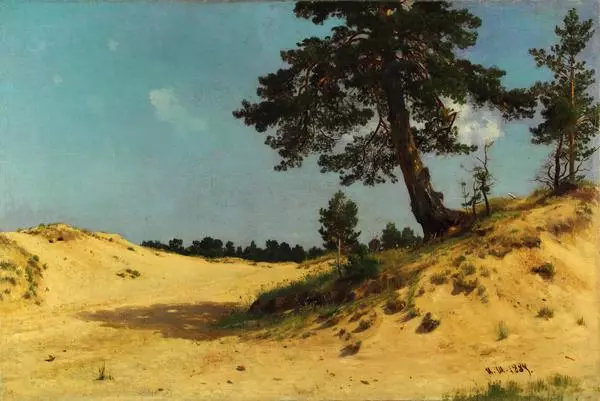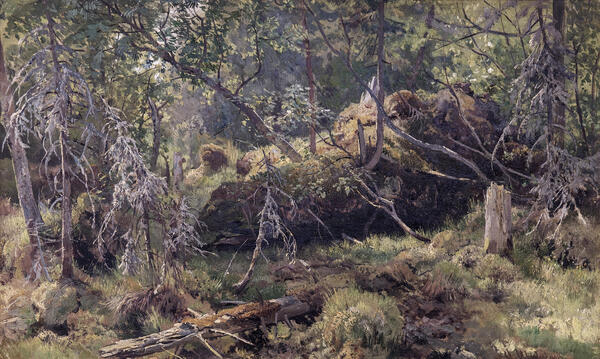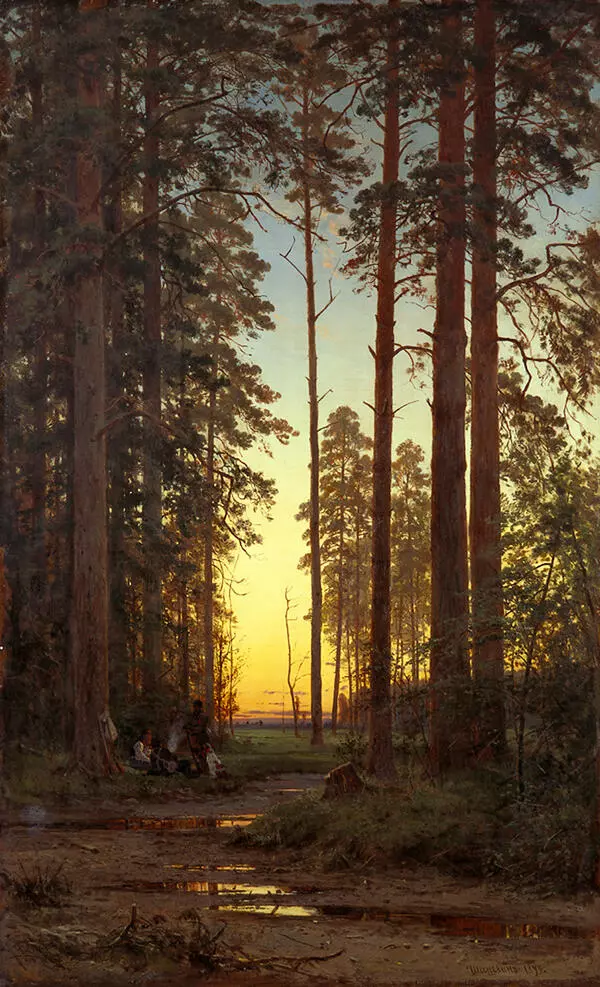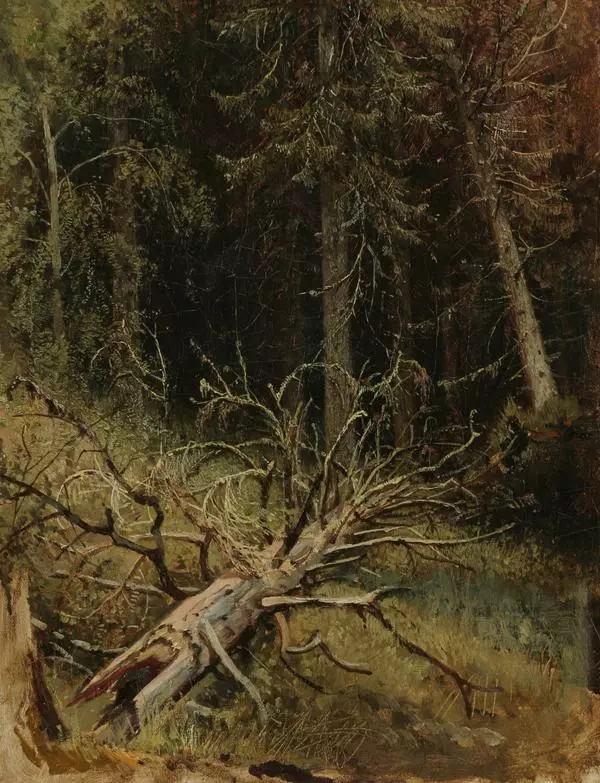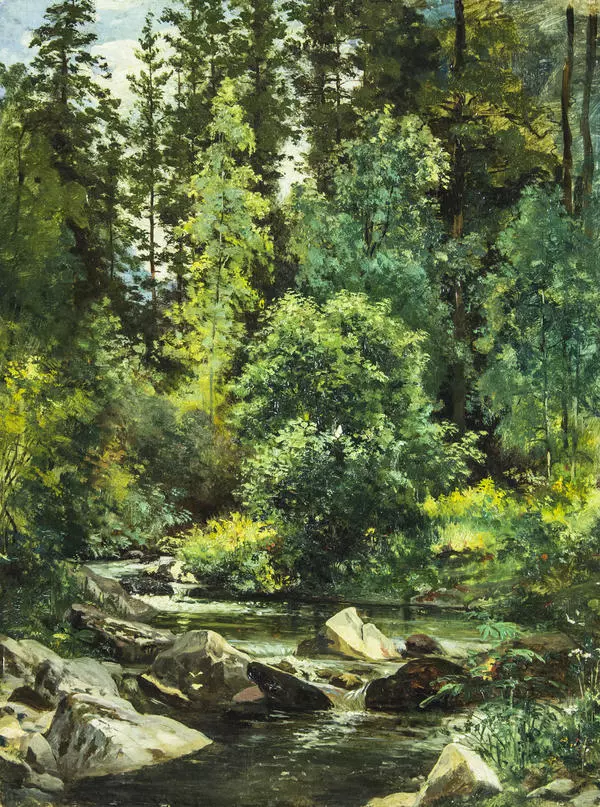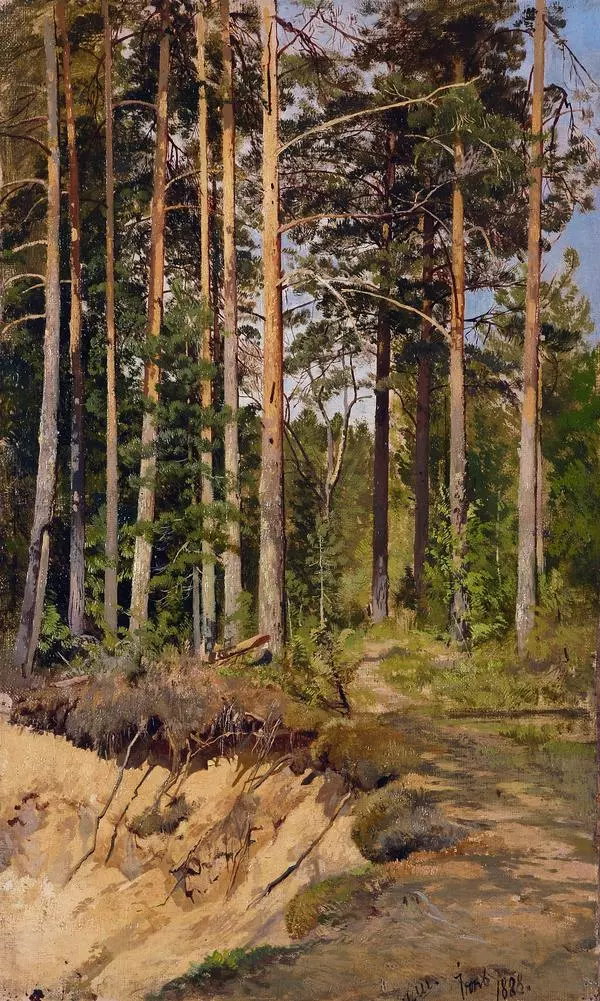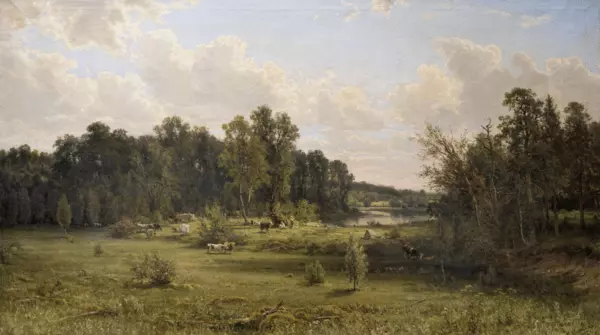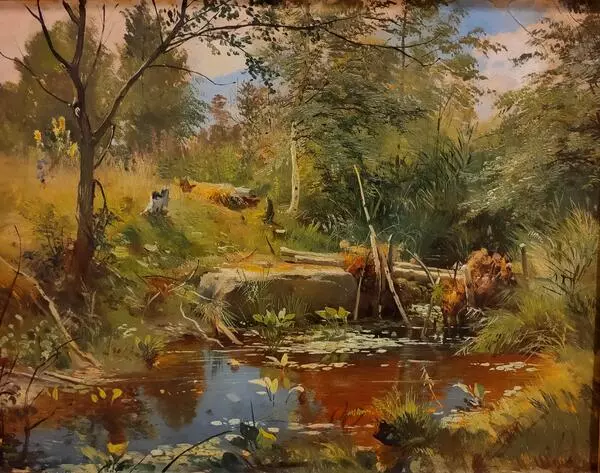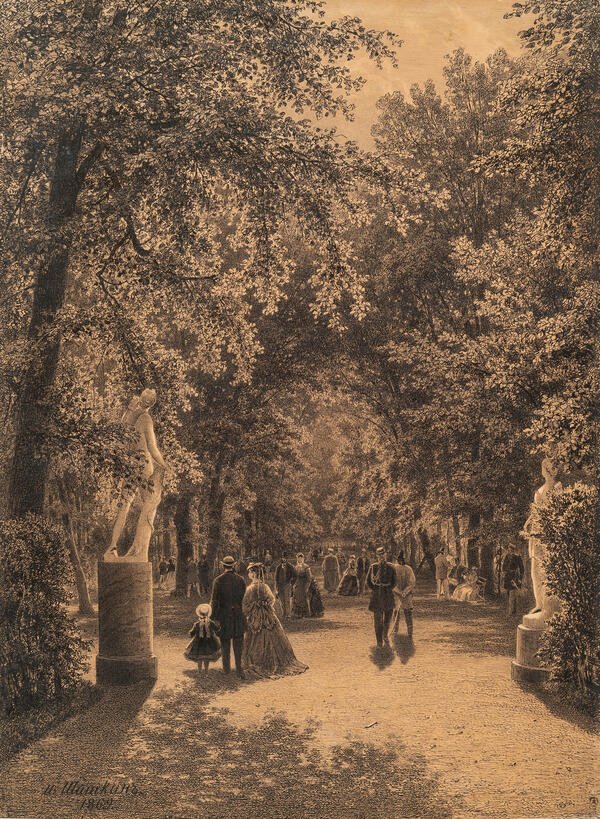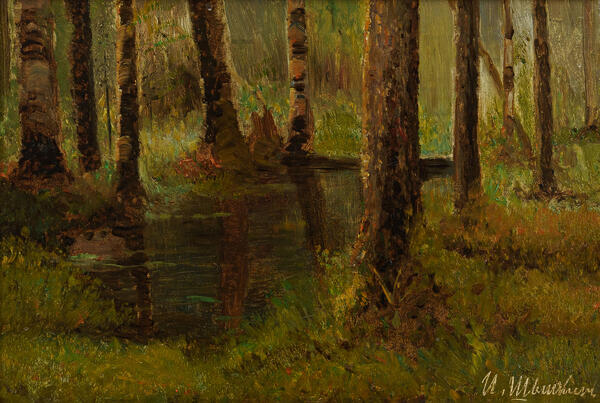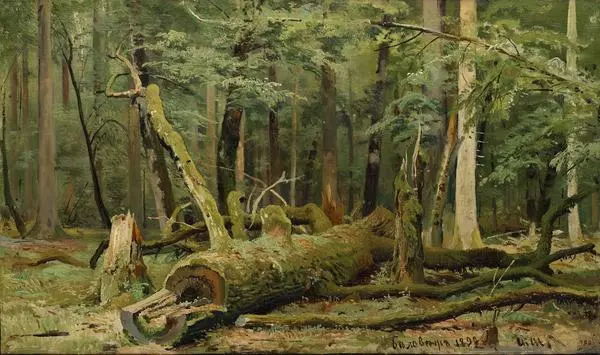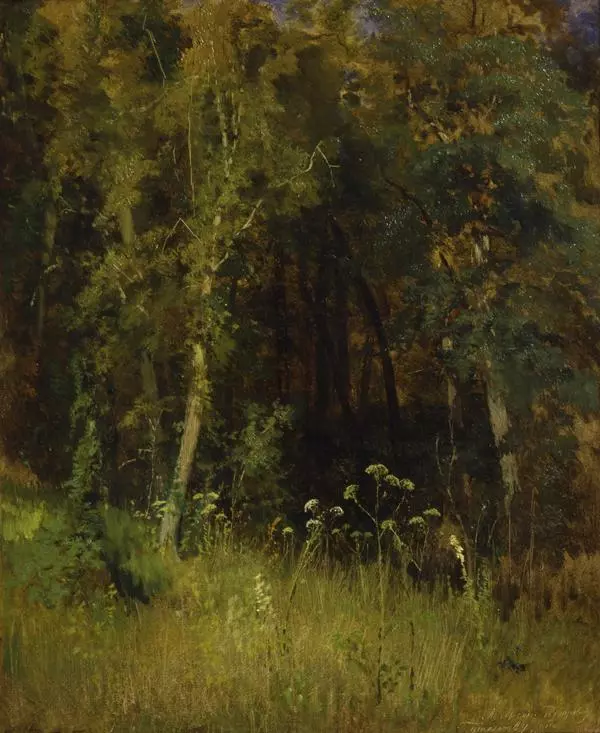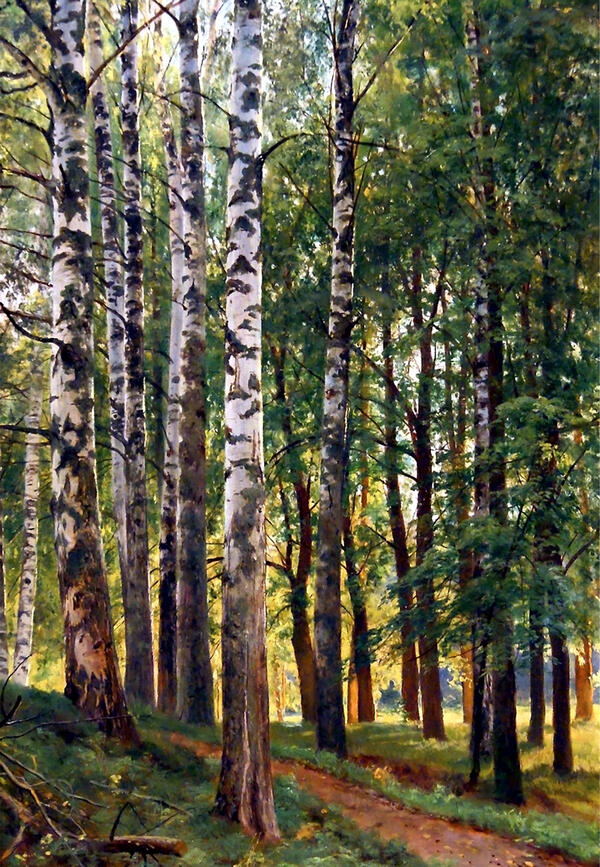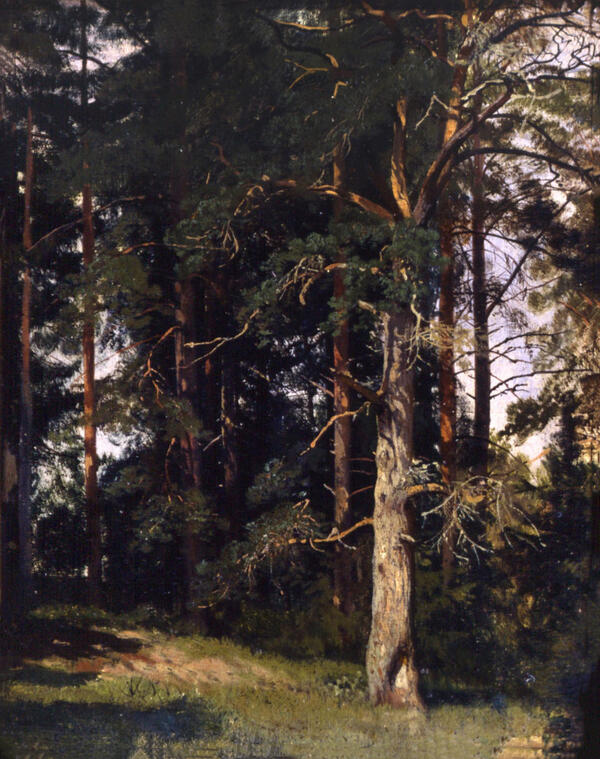The landscape ‘Inside the Forest’ from the collection of the Volsk Museum was painted by the artist Ivan Shishkin in 1894 in Merikul, on the outskirts of Narva. Shishkin often came here for vacation and painted many landscapes in this area.
The canvas depicts a quiet forest corner in the summer. The edge of the landscape shows a small sunlit opening, which highlights white umbels of ground elder and yarrow. Sunlight breaks through the greenery of the trees, and in some places, the bluish daytime sky shines through between the crowns.
At the bottom of the canvas, a path goes deep into the forest. It leads to another opening, which is visible among the trunks. The trees look frozen — that is how Shishkin conveyed a state of complete rest. The master painted the picture four years before his death.
Ivan Shishkin was born on January 25, 1832, in Yelabuga, Vyatka governorate in a large family. His father, merchant Ivan Vasilyevich Shishkin, sold bread, was the mayor of Yelabuga for eight years, and was fond of fundamentals.
The Shishkins possessed an extensive library, a small collection of paintings, a grand piano, and a harmonium — the father made sure that the children receive a well-rounded education. He was the first to notice that Ivan was interested in painting and supported his son.
In 1851, artists from Moscow arrived in Yelabuga, and they were invited to create an iconostasis for a local church. Young Ivan Shishkin met them and decided to become an artist. In 1852, he entered the School of Painting and Sculpture of the Moscow Art Society.
In 1855, Shishkin went to St. Petersburg to the Academy of Fine Arts, which he graduated five years later with the highest honor. For his painting ‘View on the island of Valaam. Kukko’, the artist received a large gold medal and the right to a business trip abroad.
In Europe, Shishkin visited Munich, Zurich, Geneva, and Dusseldorf. He also visited the workshops of famous animalists Benno and Franz Adamov and got acquainted with the works of many European masters. He worked a lot, and for the landscape ‘View in the vicinity of Dusseldorf’ the Imperial Academy of Arts awarded him the title of academician.
Shishkin returned to Russia in 1866, held an exhibition in Moscow, and since that time traveled a lot around the country and painted from nature. In the late 1860s, he became close to the Artel of Artists, which was organized by Ivan Kramskoy. The artists became friends, and Kramskoy gave Shishkin his studio to work on the painting ‘Noon. In the vicinity of Moscow’. It brought Shishkin fame in 1869 and became the first painting by the artist, which was acquired by philanthropist Pavel Tretyakov.
Ivan Shishkin worked until his last days and died on March 8, 1898, at an easel with an unfinished painting. During his life, Shishkin painted more than 500 pictures, as well as about 2.000 drawings and graphic works.
The canvas depicts a quiet forest corner in the summer. The edge of the landscape shows a small sunlit opening, which highlights white umbels of ground elder and yarrow. Sunlight breaks through the greenery of the trees, and in some places, the bluish daytime sky shines through between the crowns.
At the bottom of the canvas, a path goes deep into the forest. It leads to another opening, which is visible among the trunks. The trees look frozen — that is how Shishkin conveyed a state of complete rest. The master painted the picture four years before his death.
Ivan Shishkin was born on January 25, 1832, in Yelabuga, Vyatka governorate in a large family. His father, merchant Ivan Vasilyevich Shishkin, sold bread, was the mayor of Yelabuga for eight years, and was fond of fundamentals.
The Shishkins possessed an extensive library, a small collection of paintings, a grand piano, and a harmonium — the father made sure that the children receive a well-rounded education. He was the first to notice that Ivan was interested in painting and supported his son.
In 1851, artists from Moscow arrived in Yelabuga, and they were invited to create an iconostasis for a local church. Young Ivan Shishkin met them and decided to become an artist. In 1852, he entered the School of Painting and Sculpture of the Moscow Art Society.
In 1855, Shishkin went to St. Petersburg to the Academy of Fine Arts, which he graduated five years later with the highest honor. For his painting ‘View on the island of Valaam. Kukko’, the artist received a large gold medal and the right to a business trip abroad.
In Europe, Shishkin visited Munich, Zurich, Geneva, and Dusseldorf. He also visited the workshops of famous animalists Benno and Franz Adamov and got acquainted with the works of many European masters. He worked a lot, and for the landscape ‘View in the vicinity of Dusseldorf’ the Imperial Academy of Arts awarded him the title of academician.
Shishkin returned to Russia in 1866, held an exhibition in Moscow, and since that time traveled a lot around the country and painted from nature. In the late 1860s, he became close to the Artel of Artists, which was organized by Ivan Kramskoy. The artists became friends, and Kramskoy gave Shishkin his studio to work on the painting ‘Noon. In the vicinity of Moscow’. It brought Shishkin fame in 1869 and became the first painting by the artist, which was acquired by philanthropist Pavel Tretyakov.
Ivan Shishkin worked until his last days and died on March 8, 1898, at an easel with an unfinished painting. During his life, Shishkin painted more than 500 pictures, as well as about 2.000 drawings and graphic works.

